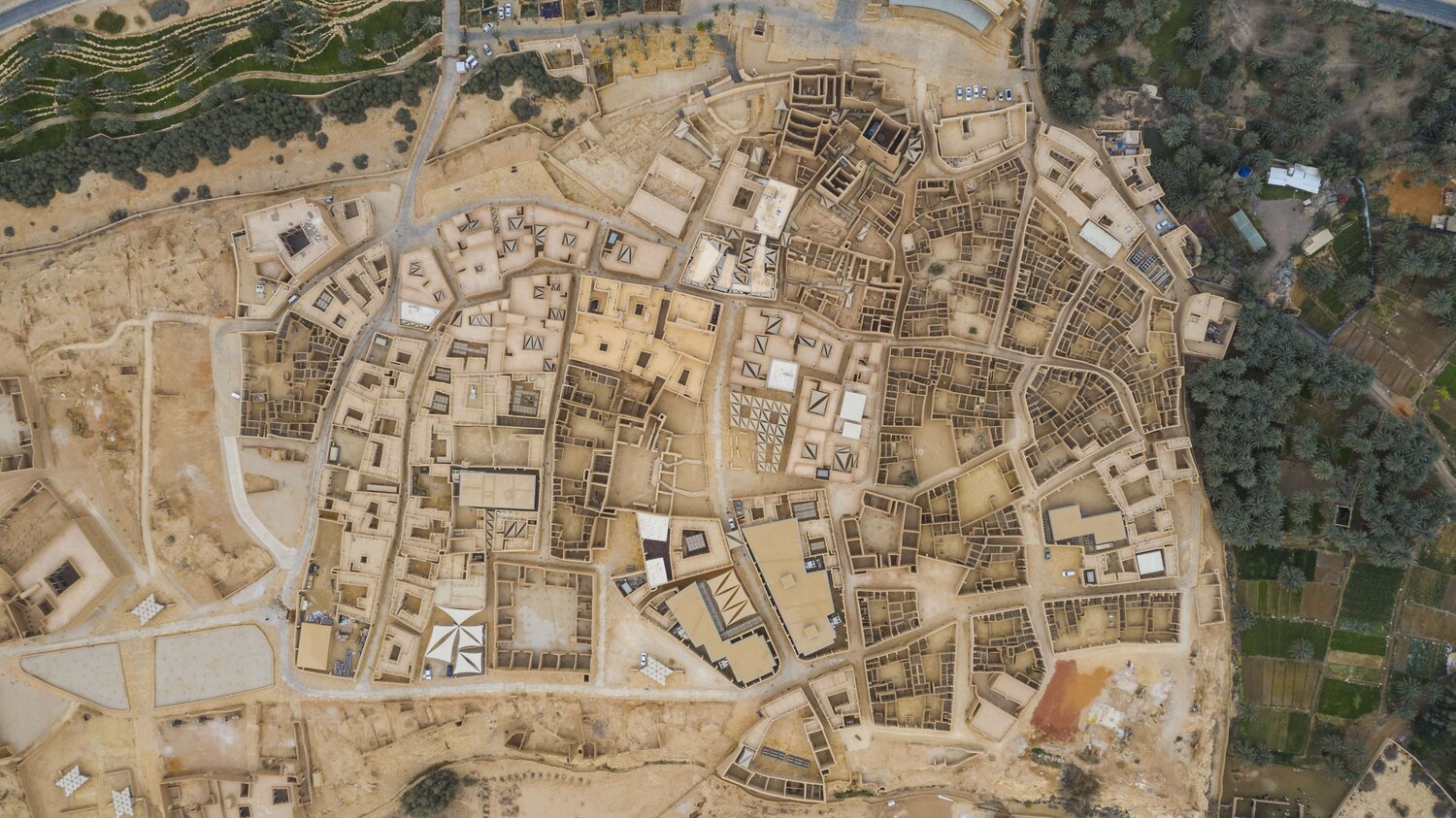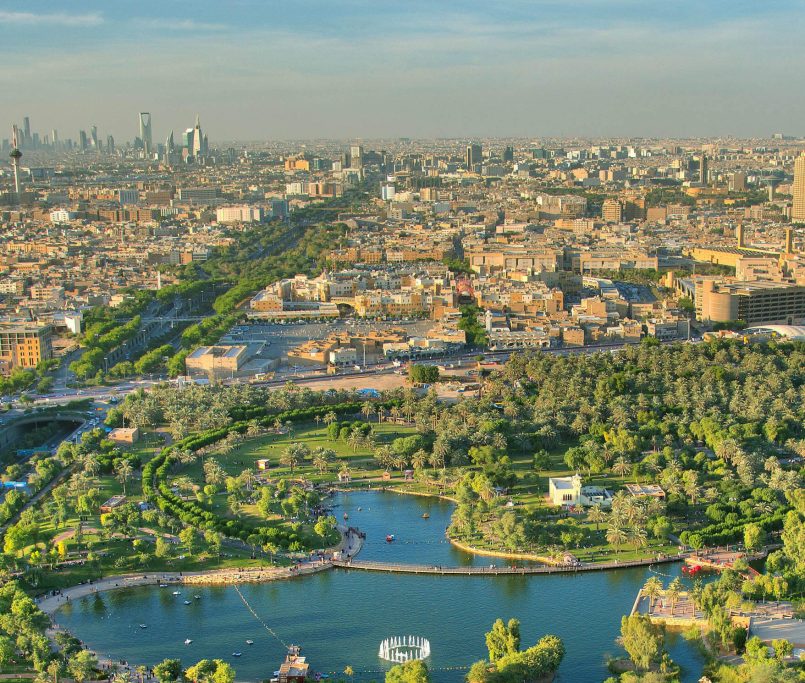Najdi Architecture: Shaping Saudi Skylines
Najdi Architecture: Shaping Saudi Skylines
Saudi Arabia’s Najdi Architecture is a cultural asset that attests to the country’s brilliant architecture and long history. Characterised by its distinct attributes and historical importance, Najdi architecture is essential to forming the nation’s visual character. This investigation delves into the architectural history, the ongoing changes along King Abdulaziz Road, preservation initiatives, modern interpretations, and the iconic, boundary-pushing, sustainable elements of Najdi architecture.
Historical Roots of Najdi Architecture
Saudi Arabia’s colourful history is woven into the architecture of Najdi, creating an enthralling tapestry. Its historical foundations are rooted in a rich cultural legacy that embodies the core of the country’s past. The exquisite mud construction techniques, the delicate timber detailing, and the captivating geometric patterns are more than just architectural features; they are the dynamic manifestations of a cultural essence that is profoundly ingrained in Najdi history. Every little element, from the tasteful use of regional materials to the elegant simplicity of the design, echoes the history of a bygone era and bears witness to the continuing legacy of Najdi architecture.

Najdi Architecture
Transformation Along King Abdulaziz Road
King Abdulaziz Road is currently undergoing a dynamic metamorphosis that will eventually turn it into a canvas that vividly displays architectural innovation. The architectural tapestry of Najdi architecture, where the blending of modernism and tradition is not only a design decision but a cultural statement, perfectly blends with the road’s rich past. The skyline along this historic road becomes a live witness to Saudi Arabia’s dedication to preserve legacy while embracing the future as the architectural resurgence washes through. Every building on King Abdulaziz Road provides a tale about the country’s architectural talent and its quest for a tasteful fusion of the ancient and the new.
Preservation Efforts
The admirable efforts made to protect Najdi’s architectural heritage demonstrate a strong dedication to maintaining its distinct character. The restoration projects that have been carried out in Diriyah and Al-Ula are prime examples of this commitment. The historical relevance and natural beauty of Najdi architecture are being carefully protected through these proactive measures. These programmes demonstrate the community’s commitment to preserving the character and allure of the architectural treasures of Najdi, offering future generations a constant source of inspiration and admiration.
Contemporary Interpretations
In order to create a visual dialogue between the past and present, modern architects are reinventing Najdi themes in structures that are built today. These interpretations are seen along King Abdulaziz Road in structures that embrace modern functioning and design while paying homage to tradition. Every building becomes an example of the architects’ ability to honour the Najdi tradition while meeting the functional and aesthetic needs of the modern day.


Sustainability in Najdi Architecture
Modern Najdi architecture has a strong emphasis on sustainability, particularly along King Abdulaziz Road. The addition of environmentally friendly elements to these buildings is a deliberate attempt to balance tradition and environmental awareness, not merely a gesture to modernity. By using these advances, Najdi Architecture is able to contribute to a resilient and sustainable architectural landscape in addition to producing visually beautiful structures
Pushing Boundaries
Saudi architects are boldly pushing boundaries globally in their pursuit of architectural excellence. This goal is exemplified by the forthcoming Jeddah Tower, which is expected to break records by becoming the highest building in the world. Through these initiatives, Saudi Arabia demonstrates its unrelenting dedication to architectural innovation, breaking through conventional rules and establishing new benchmarks for the world to see.
Cultural Centers and Innovation Hubs
King Abdulaziz Road’s emergence of cultural institutions and innovation hubs is evidence of the architectural style’s significant effect. Locations such as Dhahran’s King Abdulaziz Centre for World Culture are real examples of how innovation and tradition can coexist peacefully. These architectural wonders are bringing about a cultural rebirth in the centre of Saudi Arabia by acting as hubs for intellectual discourse and as platforms for the promotion of creativity.
Smart Cities and Technology Integration
Najdi Architecture is a leader in the field of innovative architecture, aggressively utilising cutting-edge technologies to advance Saudi Arabia’s future. The NEOM megacity project, a ground-breaking endeavour that imagines a revolutionary urban landscape seamlessly woven with cutting-edge technology, is at the vanguard of this trend. NEOM, frequently referred to as the crown jewel of Saudi Arabia, is the pinnacle of the development of smart cities. Najdi Architecture skillfully incorporates the newest technology into the carefully planned city, ushering in a new era of urban living.
The dedication of Najdi Architecture to NEOM’s technological integration is evidence of Saudi Arabia’s progressive attitude to urban planning. It represents a comprehensive commitment to developing surroundings that are not just technologically cutting edge but also sustainable and supportive of a high standard of living, going beyond the traditional notion of smart cities. The smooth incorporation of these components into NEOM is a testament to Saudi Arabia’s forward-thinking approach in embracing and advocating for innovations that enhance the welfare of its populace and the sustainability of its urban areas. Redefining what is possible when tradition and technology collide in the field of architectural genius, Najdi Architecture’s embracing of technology inside the NEOM megacity essentially captures a vision where architecture and innovation unite seamlessly.

NEOM megacity
Reviving Vernacular Najdi Architecture
One intriguing aspect of modern architectural initiatives is the resurgence of historic Najdi building techniques. Reviving techniques that were all but forgotten is what the Al Ula Old Town Restoration project does so brilliantly. The resurgence of these age-old architectural methods results in lively, useful environments that elegantly retain their cultural relevance while also being protected.
Global Collaboration
Collaborations between foreign design firms and Saudi architects offer a diversified and inclusive viewpoint to Najdi architecture in an increasingly globalised environment. These collaborations not only improve the King Abdulaziz Road’s architectural scene, but they also result in the construction of buildings that aesthetically combine Najdi traditions with modern international design. Architectural marvels that speak to a wide range of people worldwide are the product of the synthesis of these various influences.
Conclusion
In summary, Saudi Arabia’s architectural landscape bears an enduring heritage shaped by Najdi architecture. With its rich historical heritage, modern interpretations, sustainability initiatives, and worldwide influence, Najdi Architecture creates a story that transcends national boundaries. The ever-changing and dynamic King Abdulaziz Road is a vivid example of the timeless appeal and historical relevance of Najdi architecture. This architectural legacy leaves a lasting impression on the world and transcends time, honouring the past while also advancing Saudi Arabia into a future where innovation, tradition, and sustainability coexist together.


